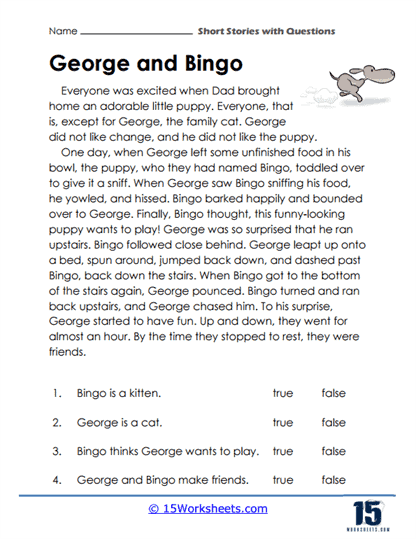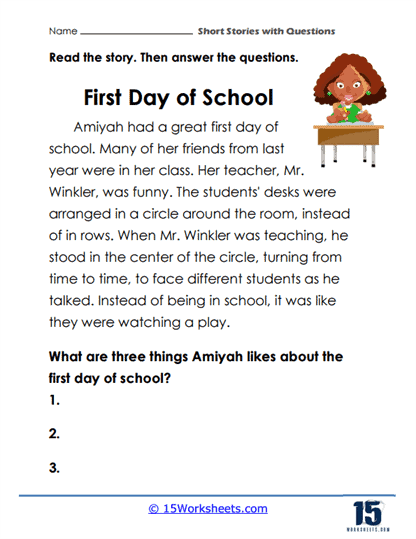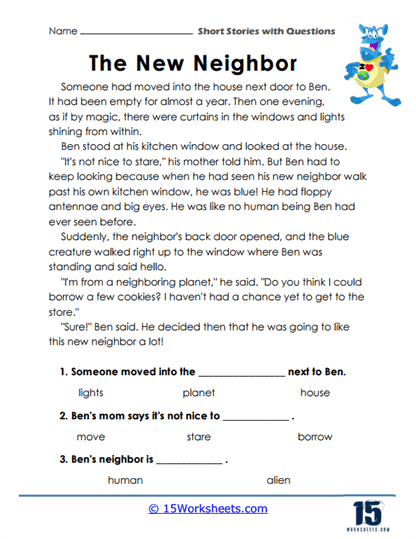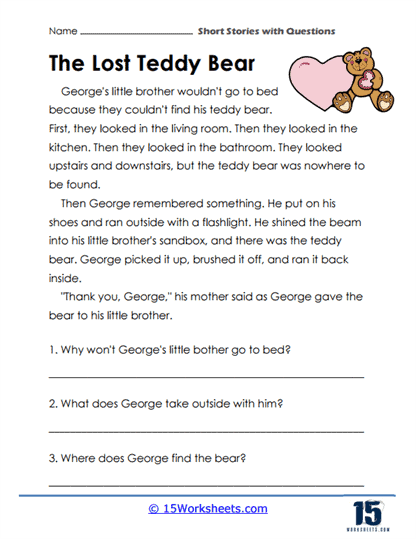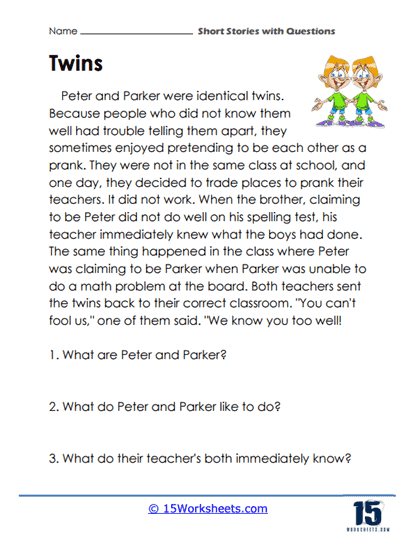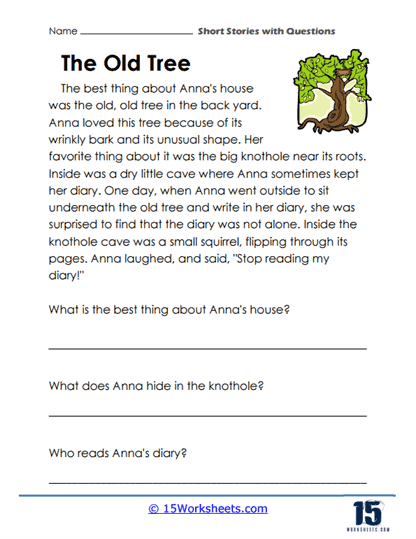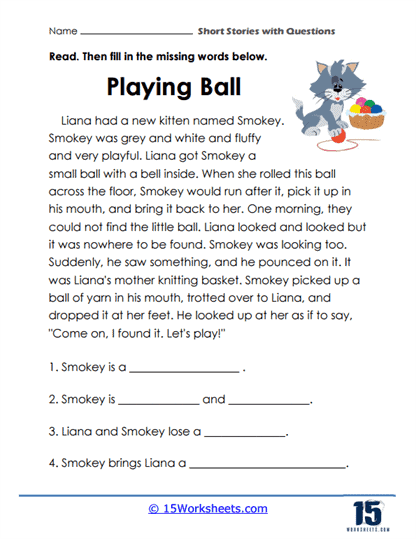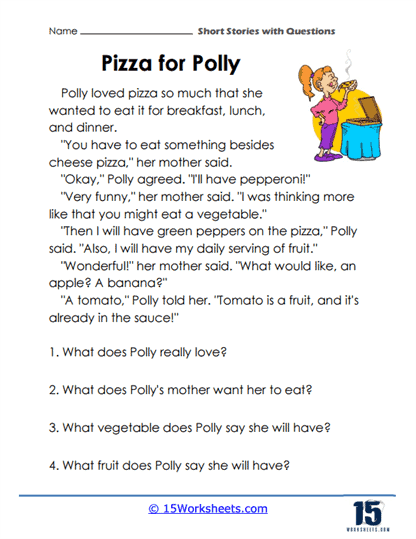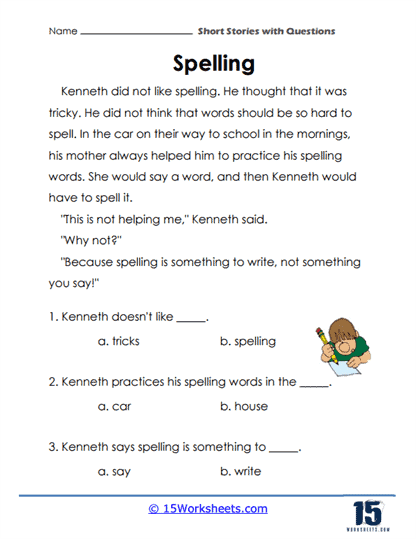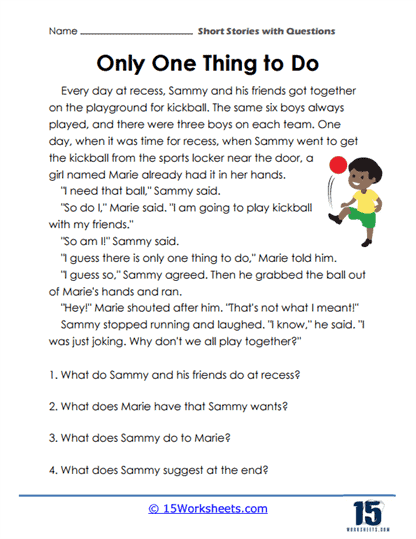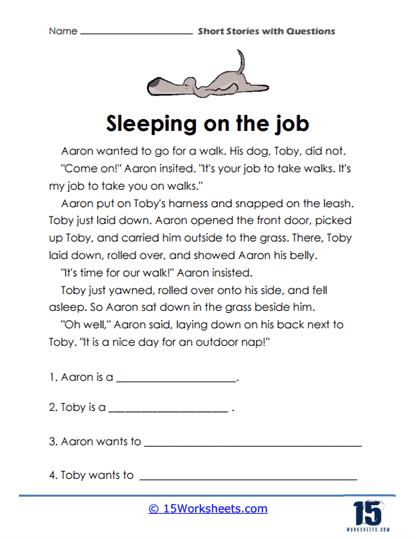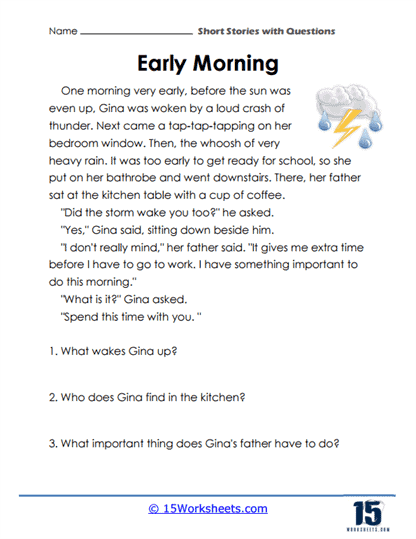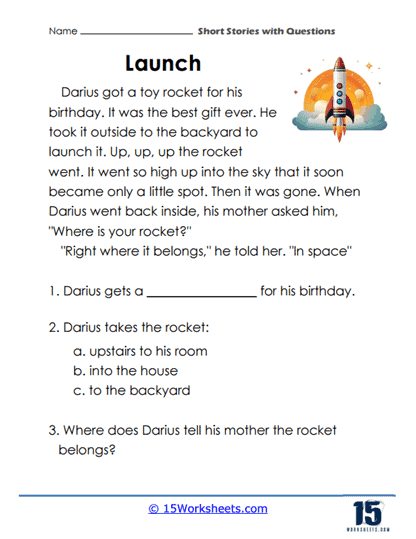Short Stories with Questions Worksheets
All About These 15 Worksheets
These short stories with questions worksheets were designed to help students improve their reading comprehension skills by using short fictional stories and accompanying questions. These worksheets are commonly used in language arts classes and reading programs to improve students’ understanding of the text, develop critical thinking abilities, and encourage thoughtful responses to the content.
The structure of short stories with questions worksheets include the following components:
Short Story – Each worksheet features a short fictional story, typically one to three pages in length. The story may vary in genre, such as adventure, mystery, science fiction, fantasy, or realistic fiction. The stories are chosen to be engaging and age-appropriate for the target audience, which can range from early elementary to high school students.
Comprehension Questions – Following the short story, a series of questions are presented. These questions assess various aspects of the reading, including literal comprehension, inference, interpretation, critical thinking, and analysis. The questions may be multiple-choice, short-answer, or open-ended, depending on the worksheet’s purpose and grade level.
Vocabulary and Language Activities – Some worksheets include vocabulary words from the story, encouraging students to identify, define, or use them in sentences. These activities help improve language skills and reinforce new words encountered in the story.
How Do These Reading Worksheets Help Students?
Comprehension and Critical Thinking Improvement – These worksheets encourage active reading and help students develop strategies for understanding and analyzing texts effectively. The questions on the worksheets prompt students to think critically, make connections, infer meaning, and draw conclusions based on evidence from the text. Short stories with questions worksheets can be adapted to various age groups and reading levels, making them suitable for diverse classrooms.
Enhancing Reading Fluency – By encountering new words in context and engaging in vocabulary activities, students can expand their language skills and improve their vocabulary. Frequent exposure to short stories helps students build reading fluency and gain confidence in their reading abilities.
Encouraging Reflection and Analysis – Writing prompts and open-ended questions encourage students to reflect on the story’s themes, characters, and events, fostering deeper engagement with the material.
Incorporating these strategies into their reading routine can significantly enhance a student’s ability to comprehend what they read in short stories and other types of texts. Reading comprehension is a skill that improves with practice and active engagement, and with consistent effort, students can become more proficient readers and critical thinkers.
How To Be Successful With Reading Comprehension Worksheets
Improving reading comprehension in short stories is a crucial skill that enhances a student’s overall literacy and understanding of various texts. Here are some effective strategies that students can use to enhance their ability to comprehend what they read in short stories:
Active Reading – Encourage students to actively engage with the text while reading. This includes underlining or highlighting key points, jotting down notes in the margins, or using sticky notes to mark important sections. These practices help students stay focused, identify significant details, and retain information.
Pre-Reading Strategies – Before diving into the story, students should preview the text by skimming the title, headings, and subheadings. This provides a sense of what to expect in the story and helps activate prior knowledge related to the subject matter.
Set a Purpose for Reading – Students should establish a clear purpose for reading the short story. Whether it’s to understand the main idea, identify the central theme, or analyze the characters, having a specific goal in mind helps maintain focus and comprehension.
Break the Story into Sections – Encourage students to break the short story into manageable sections or chunks. After reading each section, they can pause to summarize what they have learned and make connections to the overall narrative.
Identify Story Elements – Help students recognize the essential elements of a short story, such as characters, setting, plot, and theme. Understanding these components enhances comprehension and enables students to grasp the story’s overall structure.
Ask Questions – Encourage students to ask questions as they read. Questions can range from basic ones, such as “What happened next?” to more analytical ones, like “Why did the character make that decision?” Questioning helps students actively engage with the content and deepen their understanding. Encourage students to make predictions about the story’s outcome based on the information they have gathered. This strategy fosters active thinking and encourages students to look for evidence to support their predictions as they read.
Summarize – After reading the short story, have students write a concise summary of the plot or the main points of the narrative. Summarizing helps reinforce understanding and aids in memory retention.
Visualize – Encourage students to create mental images or visualizations of the events and characters in the story. Visualization enhances comprehension by making the content more vivid and relatable.



